Loving your indoor succulents and wondering how to use sempervivum in landscape? You’re in luck! Sempervivum are one of the most popular houseplants. AND they also work great in the landscape. They look beautiful when planted in rock gardens or as a part of xeriscaping. Here we’ll show you how to use sempervivum in your garden, and give you some extra helpful care tips along the way!
Arranging Sempervivum Succulents
There are few gardening projects more stunning than a small grouping of sempervivum plants. Also known as hens and chicks, these succulents make an excellent addition to any garden. Why? Not only do they add wonderful color and texture, but they require very little water or care. Here are some tips for incorporating these striking plants into your garden design.
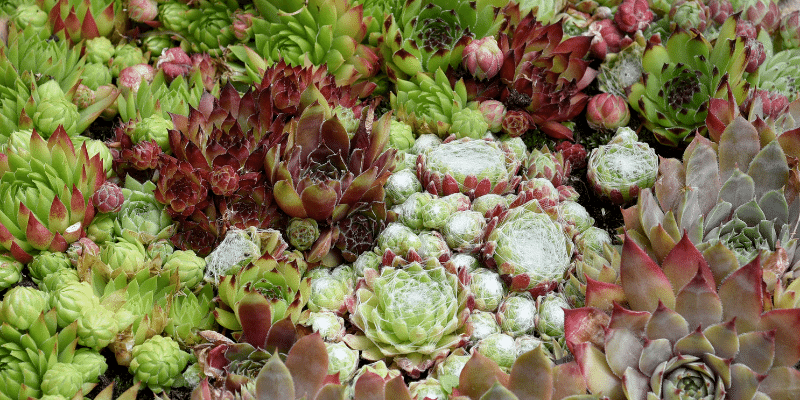
Go with a tight grouping
Groupings of succulents can make a bold statement. Start by arranging each plant separately. Then move them around until you find an arrangement that suits your tastes. Be sure to leave space between plants, as some varieties will grow into each other if they’re too close together. You can also group sempervivum specimens according to their flowering times. Most sempervivums will bloom when exposed to long hours of sunlight or warm temperatures during late spring.
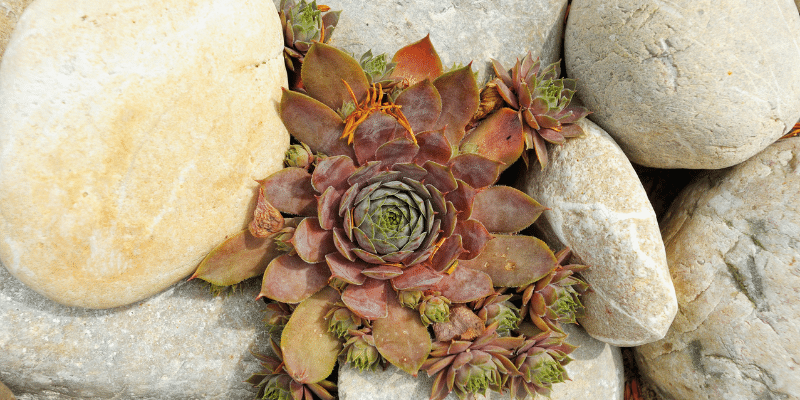
Plunk them between rocks
Sempervivums create a natural, understated look. These plants can thrive outdoors throughout summer and even into winter. Meaning you can incorporate them into an outdoor landscape all year long. Try working them in between rock features in the landscape. An easy way to add color and texture!

Combine with perennials
Use them as accents around taller plants or combine several succulents with other hardy perennials for added effect. With their low maintenance requirements and bright colors, they’ll quickly become one of your go to ornamental choices.
What Soil Should I Use For Succulents?
Succulents prefer sandy soil, like cactus and succulent potting soil, but they also will grow in well-draining organic soils. If you want to reuse your existing garden soil for your new succulent addition, add one part sand or perlite for every six parts of existing soil. This will help lighten up dense soils and help them drain better so that your plants don’t suffer root rot. Be sure to let your soil dry between waterings; while sempervivums need water year round, they shouldn’t be kept constantly wet.
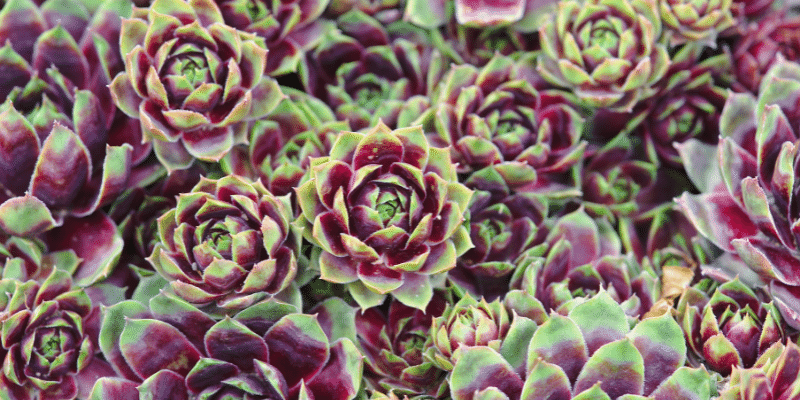
Light Requirements Of Sempervivum in Landscape
Most sempervivums are native to Mediterranean climates, so they require full sun. When you are planting them in your garden, put them where they will get at least 6 hours of sunlight each day. If you live in a region with cloudy weather or high altitude (such as San Francisco) it’s a good idea to put them where they can receive shade from overhanging tree branches for part of the day. As long as they don’t spend too much time under trees, succulents should be able to tolerate sunny areas for most of their exposure. That said, sometimes shade is nice when it gets hot!
Using Sempervivum in the Outdoor Landscape
Succulents are a growing trend that is not going away anytime soon. At first glance they appear unconventional, but given their low-maintenance and resistance to drought, you may want to think twice before judging them by their cover. Ready to incorporate sempervivum into your garden design? Check out our selection here and get ready to enter the wonderful world of outdoor succulent gardens!

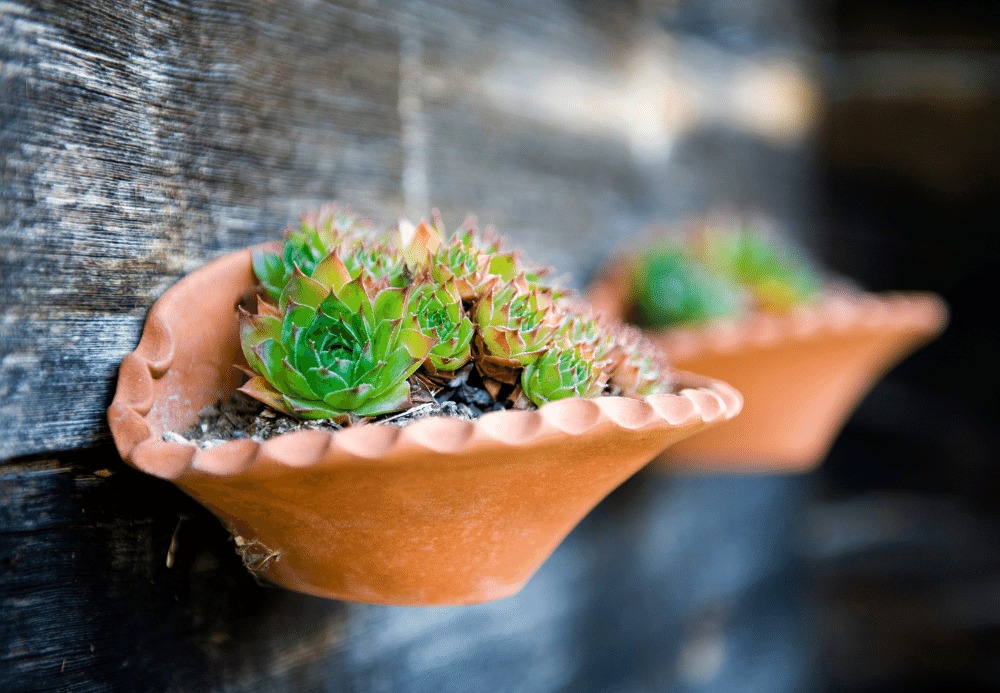
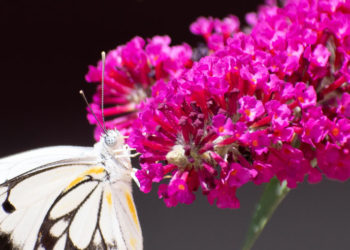


No Comments